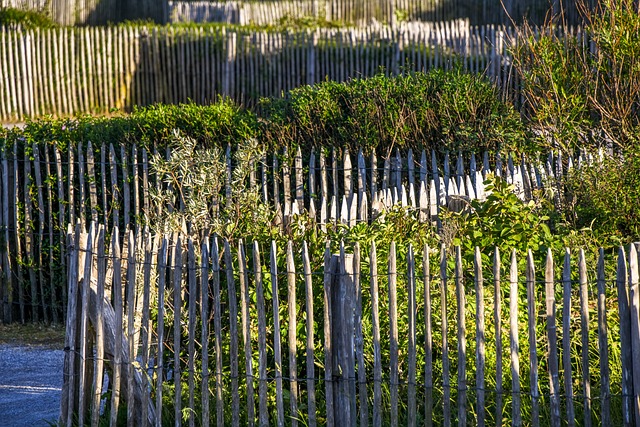Securing Your Vast Space: Cost-Effective Fencing Solutions for Large Properties
Maintaining a large property presents unique challenges, particularly when it comes to fencing. Traditional options can be both expensive and upkeep-intensive. However, innovative cost-effective solutions now offer durability, low maintenance, and aesthetic appeal. This article delves into the key considerations for large property owners, exploring traditional versus modern fencing materials, durable options, creative design possibilities, and installation tips to ensure longevity and maximize your investment.
- Understanding Large Property Fencing Needs
- Traditional Fencing vs Cost-Effective Solutions
- Durable and Low-Maintenance Materials
- Creative Design Options for Large Spaces
- Installation Tips for Longevity and Value
Understanding Large Property Fencing Needs
Fencing large properties presents unique challenges and requires tailored solutions to balance aesthetics, functionality, and budget. These expansive landscapes often demand fences that can withstand varying terrain, extreme weather conditions, and potential wildlife encounters. Furthermore, homeowners must consider privacy, security, and visual appeal while selecting fencing materials and designs suitable for their property’s vastness.
Large properties may include diverse areas such as fields, gardens, wooded regions, or even recreational spaces, each with its own specific needs. As such, a versatile and durable fence is essential to accommodate these variations. Understanding the unique characteristics of the land and the desired level of privacy and security is crucial in making informed decisions about fencing materials, styles, and installations that offer both cost-effectiveness and long-lasting performance.
Traditional Fencing vs Cost-Effective Solutions
Traditional fencing methods often involve heavy costs and extensive labor, making them less accessible for large properties due to budget constraints. These conventional barriers typically rely on expensive materials like wood or metal, requiring regular maintenance and repairs, which add to the overall expenditure over time.
Cost-effective fencing solutions present a viable alternative by offering both affordability and durability. Innovative materials such as vinyl, plastic, or composite options not only reduce initial installation costs but also eliminate the need for frequent upkeep. These modern alternatives are designed to withstand harsh weather conditions, resist rot, and maintain their integrity, providing long-lasting protection at a fraction of the cost of traditional fencing.
Durable and Low-Maintenance Materials
When considering fencing solutions for large properties, opting for durable and low-maintenance materials is a smart choice. Modern technologies have introduced a range of robust options that can withstand harsh weather conditions and minimize upkeep requirements. Materials like vinyl, aluminum, and high-density polyethylene (HDPE) are popular choices due to their resistance to rust, rot, and corrosion, ensuring the fence remains in excellent condition for years.
These materials also offer aesthetic versatility, with various colors and styles available to match different landscape designs. Moreover, they are easy to clean and maintain, requiring only occasional washing and minimal tools, which saves time and money in the long run. This low-maintenance aspect is particularly advantageous for large properties where regular upkeep can be challenging.
Creative Design Options for Large Spaces
When it comes to designing fences for large properties, creativity can transform a simple barrier into an eye-catching feature. The key is to consider the unique characteristics of the space—its size, shape, and surrounding environment. For instance, winding paths through sprawling fields can be accentuated with curved fencing that mimics natural contours, creating a seamless blend with the landscape.
For more open areas, vertical landscaping or living fences using hedges or trees can provide privacy while allowing light and air to circulate. These options not only enhance the aesthetics but also offer flexibility in terms of maintenance, with some designs requiring less upkeep than traditional solid fences.
Installation Tips for Longevity and Value
When installing fencing for large properties, prioritizing longevity is key to maximizing the investment. Start by assessing the terrain; adjust your fence design accordingly to accommodate any contours or obstacles that might affect stability and durability. Proper drainage is also crucial; ensure water can flow freely along the fence line to prevent erosion and rot.
Use high-quality materials suitable for outdoor exposure, like treated wood or durable vinyl. Post-installation, maintain regular cleaning and inspection routines. Seal wooden fences annually to protect against moisture and pests. Regular maintenance not only preserves aesthetics but also strengthens the fence’s structural integrity, ensuring its longevity and retaining property value.
